9 Vibrant Yellow-Flowering Plants For a Happy, Sunny Garden
Plant these little rays of sunshine to boost your curb appeal.
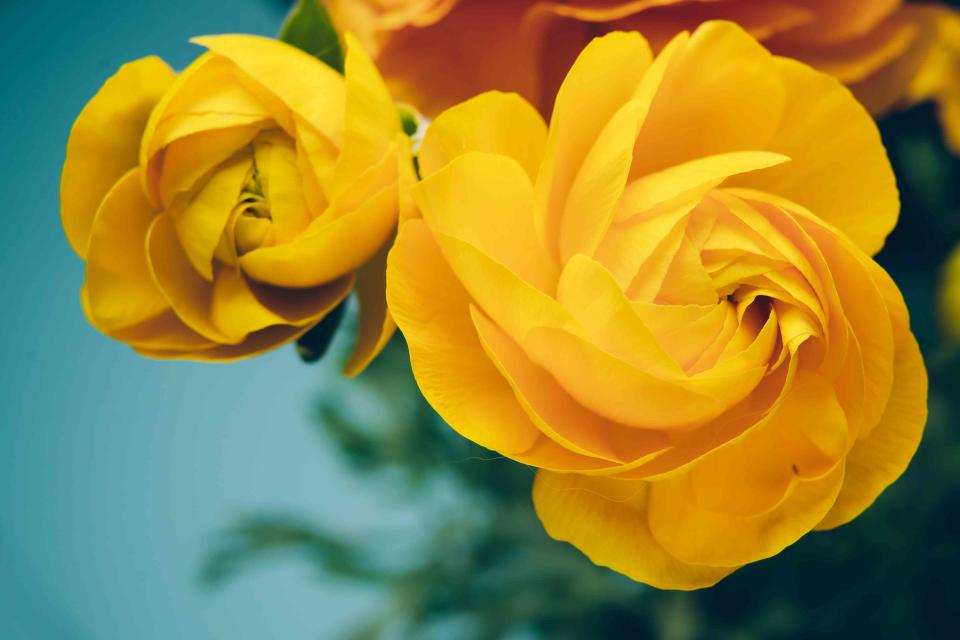
Yummy pic/Getty Images
Yellow flowers bring a burst of cheer to any landscape. They complement cool-toned flowers and create a lush mosaic of warmth when paired with orange and red-tinged flowers. Whether you want to add color to your landscape or create a focal piece for your garden, there are many yellow flowers to choose from.
“Yellow flowers are a dazzling addition to any garden,” says horticulturist and botanical designer Nathan Heinrich. “They are perfectly paired with other warm-colored flowers like reds and oranges. They also add a lovely contrast to cool colors such as blues, purples, and even pink blooms. There are practically no colors that clash with yellow.”
In addition to offering vibrant color, yellow flowers often attract pollinators such as bees, butterflies, and hummingbirds. These pollinators improve your garden’s health, helping to move pollen between plants so they can reproduce.
If you want to add some yellow blooms to your landscape, there are many varieties with flowers for all climates. Read on for the top yellow flower recommendations from plant experts.
Meet Our Expert
Nathan Heinrich, horticulturist and botanical designer
Diane Kuthy, founder and lead gardening expert at How to Grow Everything
Scott McLeod, owner of McLeod Landscaping Inc.
Sunflower
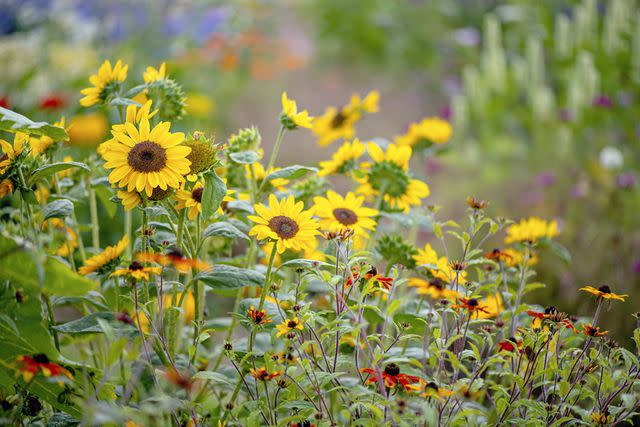
Jacky Parker Photography/Getty Images
The glowing sunflower (Helianthus annuus) is a classic yellow flower that brings bursts of yellow color to landscapes when in full bloom from summer to fall. These popular annuals grow from 3 to 6 feet tall and make a striking statement in any garden.
“An unbeatable choice for adding a splash of yellow is the sunflower,” says Scott McLeod, owner of McLeod Landscaping Inc. “Sunflowers are incredibly easy to grow, requiring full sun and regular watering. They’re not particularly fussy about soil type but do best in well-drained soil enriched with organic matter. Beyond their visual appeal, they attract pollinators, adding life and movement to gardens.”
Sunflowers grow best in zones 2 through 11 and thrive in full sun with well-draining soil.
Related: What Is an Annual Plant vs. a Perennial—and Its Benefits
Daffodil
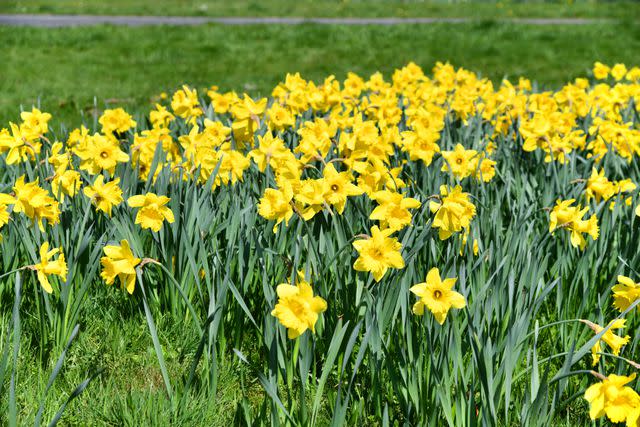
Fotofreak75/Getty Images
Daffodils (Narcissus spp.), which come in many yellow varieties, offer springtime color. These bright perennials grow easily and bloom in early spring. They thrive in full sun but can also grow in partial shade.
“While the classic ‘buttercup’ daffodil comes to mind when people think of this flower, there are actually dozens of varieties of daffodils, some of which resemble roses and other more popular flowers,” says Diane Kuthy, founder and lead gardening expert at How to Grow Everything. “Daffodils are perennial flowers best planted in the fall before the first frost. Like tulips, daffodils do best in cooler zones between 3 through 7, although there are some varieties which can thrive in warmer zones.”
Daffodils need regular watering in the spring and fall and do best with well-draining soil. Note that these cheerful blooms are toxic to humans and pets.
Tickseed
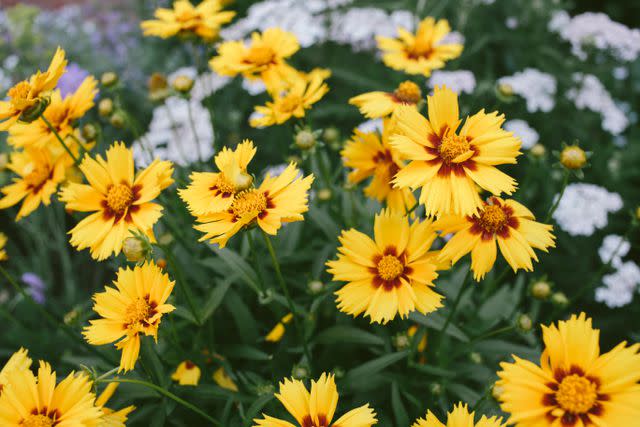
Grace Cary/Getty Images
Tickseed (Coreopsis) is a low-maintenance, long-blooming perennial with daisy-like blooms. These cheery flowers often come in shades of yellow, and some varieties have red, pink, and orange hues.
“One of my favorite yellow flowers to incorporate for instant brightness and appeal is the Coreopsis, often called tickseed,” says McLeod. “It’s a hardy perennial that thrives in full sun and can tolerate drought, making it a low-maintenance option for commercial and residential properties. Coreopsis blooms from early to late summer, providing long-lasting color with minimal care. Just ensure they’re planted in well-draining soil, and you’ll see exceptional results.”
Tickseed grows best in zones 2 through 11.
Yellow Lantana
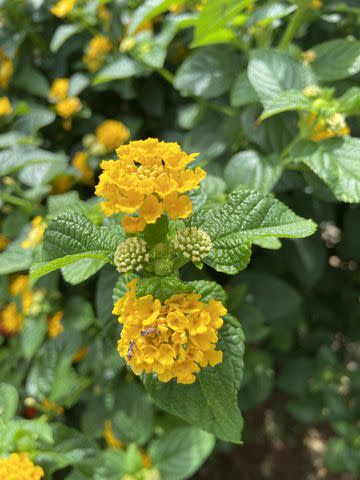
Samuel Peretta / 500px/Getty Images
The Yellow Lantana (Lantana camara) is perfect for a warm-weather plant with colorful blooms. These fast-growing blooms thrive in direct sunlight and prefer well-draining, neutral, slightly acidic, or slightly alkaline soil.
“Drought-resistant and deer-resistant, these bright, cheerful, low-growing plants produce yellow blooms from spring through the fall,” Heinrich says. “In warmer regions, zones 9 through 11, Lantana are perennial. In regions with cold winters, they are annuals.”
Lantana can grow in zones 7 through 11. Lantana is toxic to pets.
Related: 20 Impossible-to-Kill Outdoor Plants
Tulips
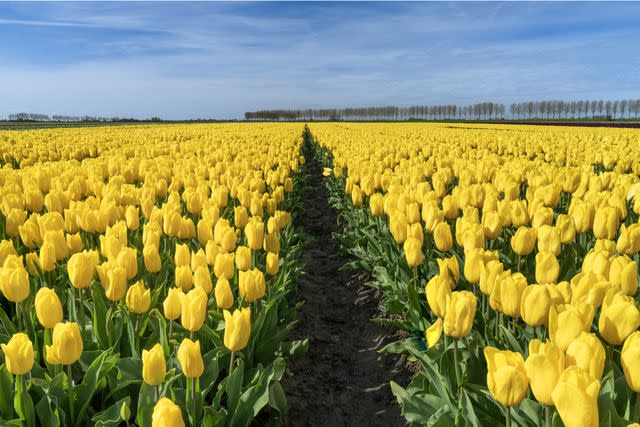
Kees Ijzerman / 500px/Getty Images
Tulips (Tulipa) are classic yellow blooms that symbolize spring and rebirth. These perennials prefer full sunlight and rich, well-draining soil.
“Tulips are hardy, one of the earliest flowers to bloom in the spring, and make for beautiful cut flowers in floral arrangements,” Kuthy says. “Tulips are pretty simple perennial flowers to plant. Order tulip bulbs in the fall and plant them about six weeks before your first frost. Tulips need a period of cool weather in order to bloom in the spring, so they do better in zones 3 through 7 than in warm climates in zones 8 through 11.”
Yellow Coneflower
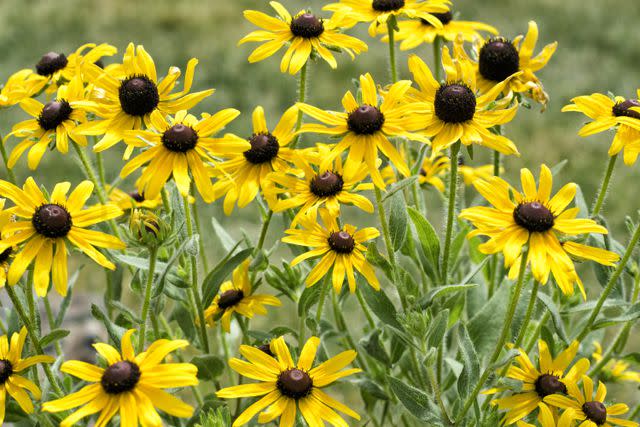
undefined undefined/getty images
Yellow coneflower (Echinacea paradoxa) is a vibrant yellow flower that is drought-tolerant. The perennial has bright yellow ray petals surrounding a brown, cone-shaped center.
“While it is deer-resistant, coneflower is butterfly and bird-friendly,” Heinrich says. “This hardy perennial thrives in full sun in zones 4 through 8. It grows 18 to 24 inches tall.”
Yellow coneflower thrives in full sun but can tolerate light shade. New plants need regular watering, but once established, they only need watering during extended dry periods. These sunny yellow plants thrive in well-draining soil.
English Climbing Roses
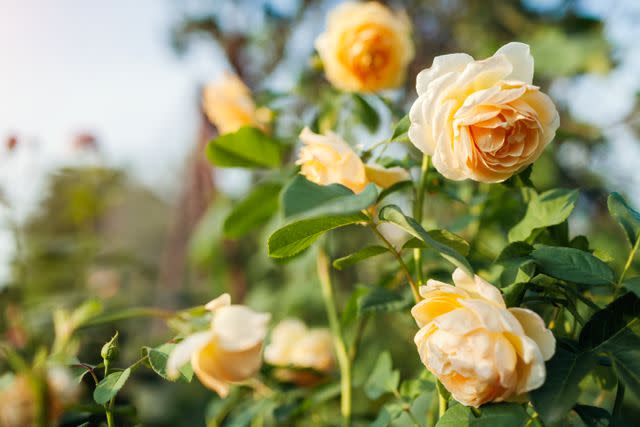
Maryviolet/Getty Images
Roses are not just red—they come in many colors, including vibrant yellow. Yellow roses symbolize friendship and joy.
“My favorite yellow rose is the English Climbing 'Graham Thomas’ rose,” says Kuthy. They are stunning deep yellow roses that produce baskets full of wonderfully scented roses. These roses are perfect for arches and trellises, or you can train them to climb up a brick façade. Roses are best when planted in the spring in a spot that receives full sunlight in very rich soil.”
English Climbing roses (Rosa Ausmas) grow well in zones 5 through 11.
Related: How to Choose the Right Types of Roses for a Gorgeous Garden
False Indigo
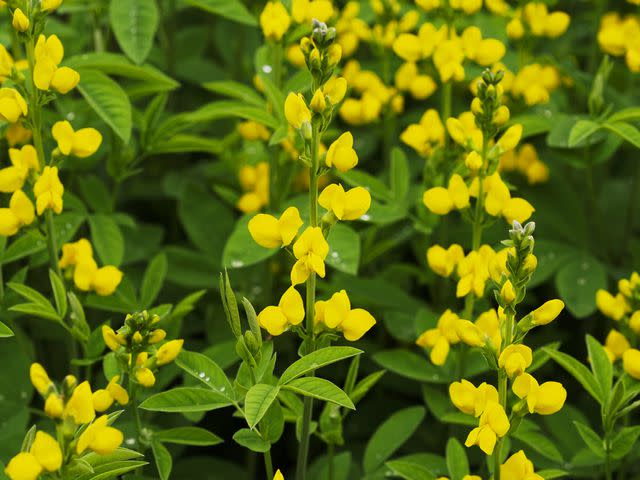
hanspw/Getty Images
If you live in a dry area or have poor soil quality, the False Indigo (‘Lemon Meringue’ Baptisia) is the perfect yellow flower. These tough perennials can survive droughts and offer bright yellow blooms in April and May.
“The 3-inch yellow blooms on this sturdy native perennial look a bit like sweet pea flowers,” Heinrich says. “If you have poor soils where other plants fail to thrive, this ‘Lemon Meringue’ False Indigo will do very well and will probably outlive many other plants in your garden. The deer-resistant perennial is hardy in zones 4 through 9 and loves full sun.”
Ligularia "Bottle Rocket"
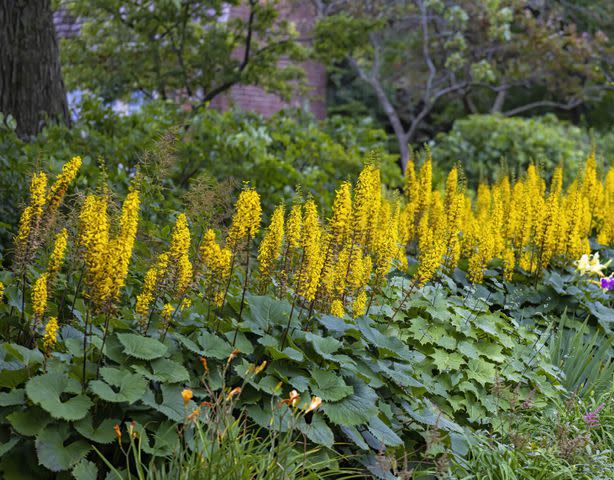
Karel Bock/Getty Images
Ligularia (Ligularia spp.) offers stunning late-summer flowers with yellow blooms. These perennials are sometimes called leopard plants.
“The 28 to 34-inch tall, mid-summer, spike flowers of Ligularia 'Bottle Rocket’ are a beautiful rich butter color,” Heinrich says. “One of the few yellow flowers that thrive in full shade, these elegant blooms grow best in zones 4 through 9.”
The plants are deer-resistant and attract butterflies. The bottle rocket variety of ligularia prefers moist soil and needs regular watering.
For more Real Simple news, make sure to sign up for our newsletter!
Read the original article on Real Simple.

